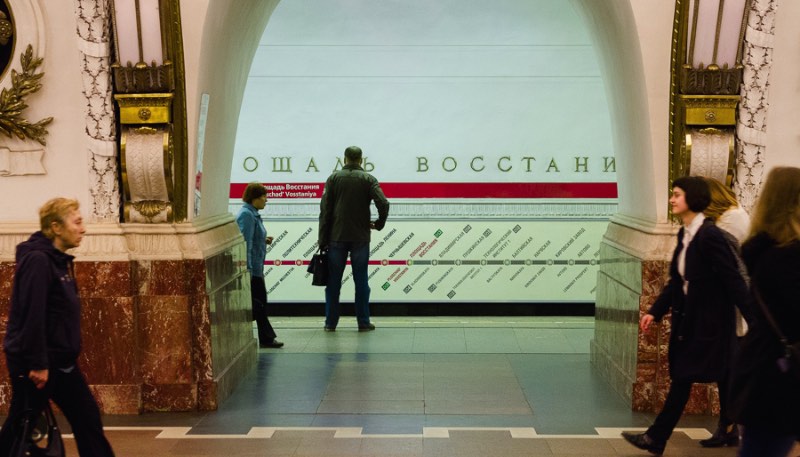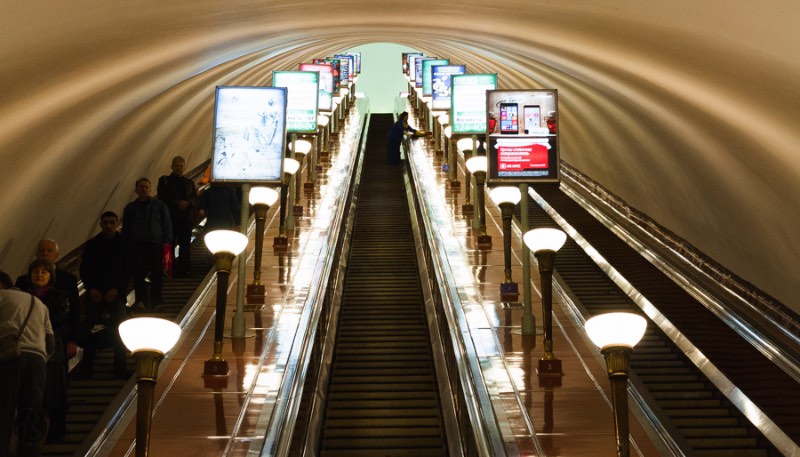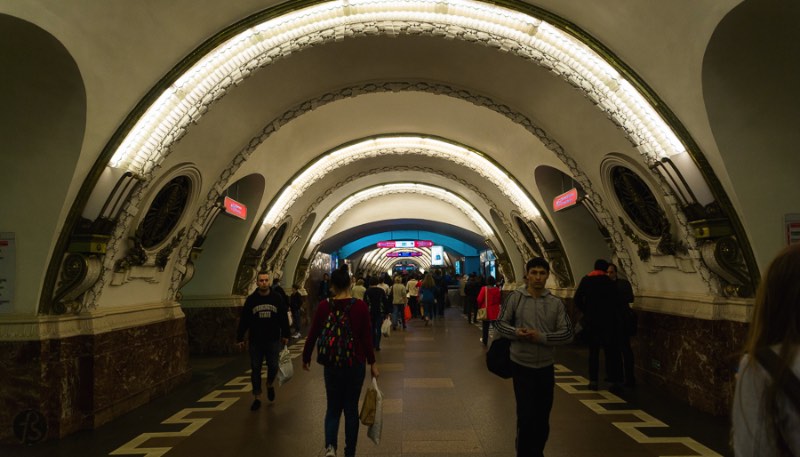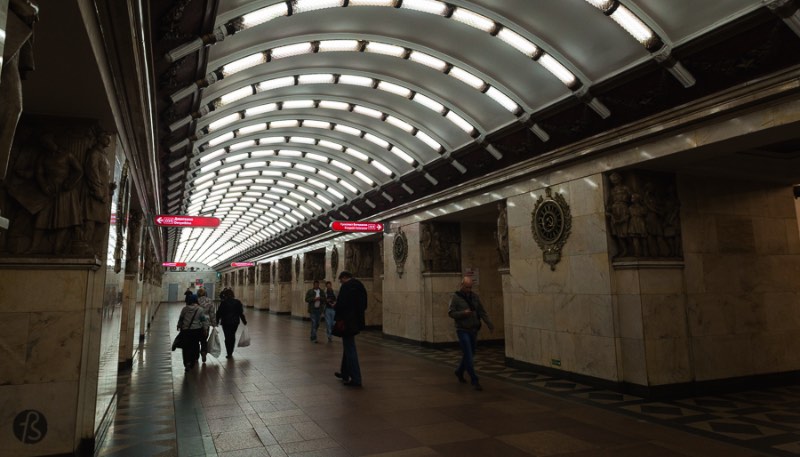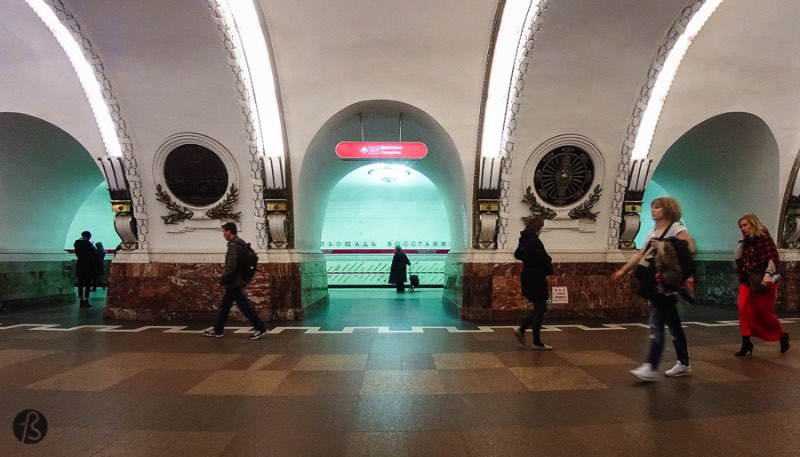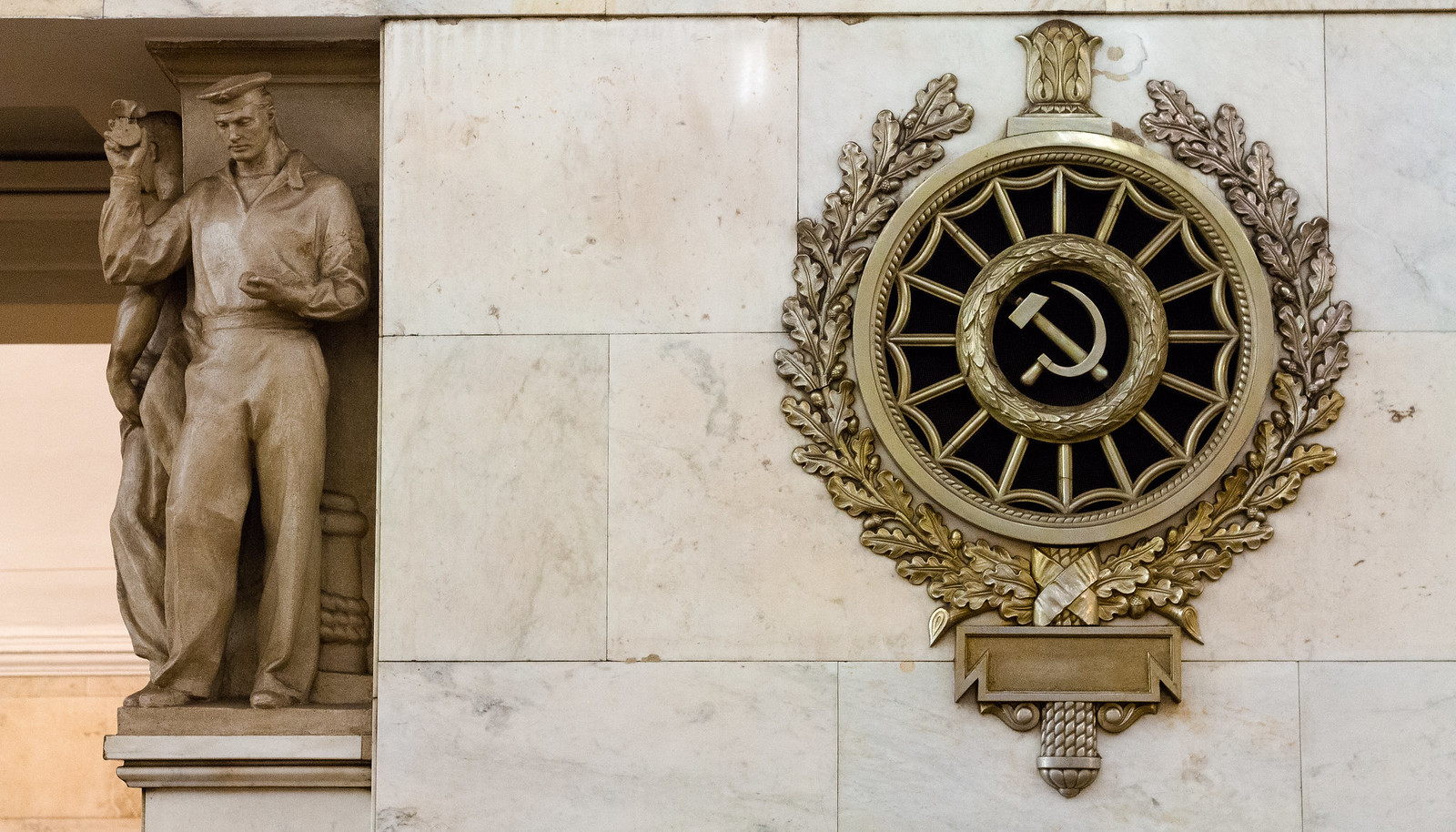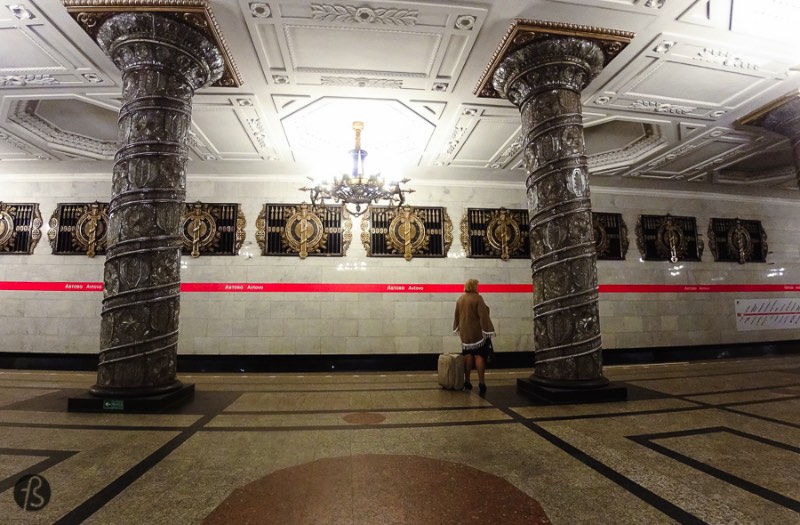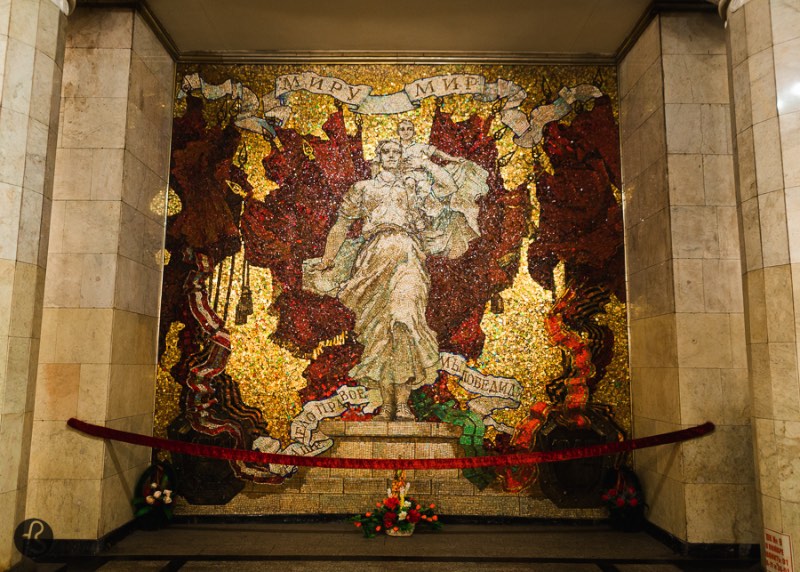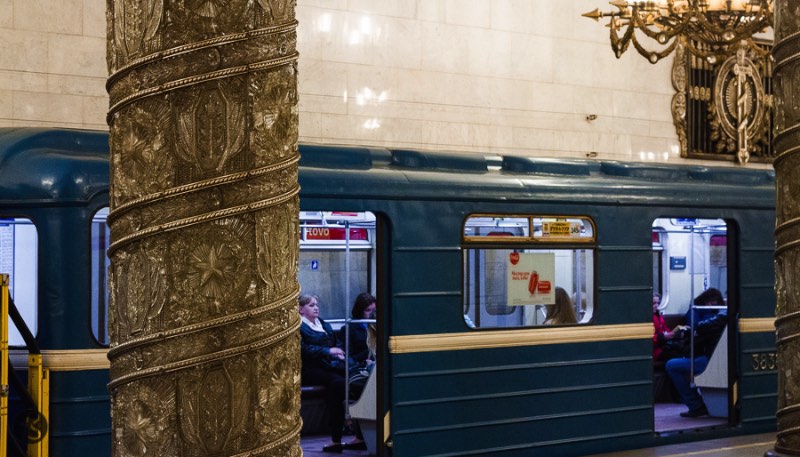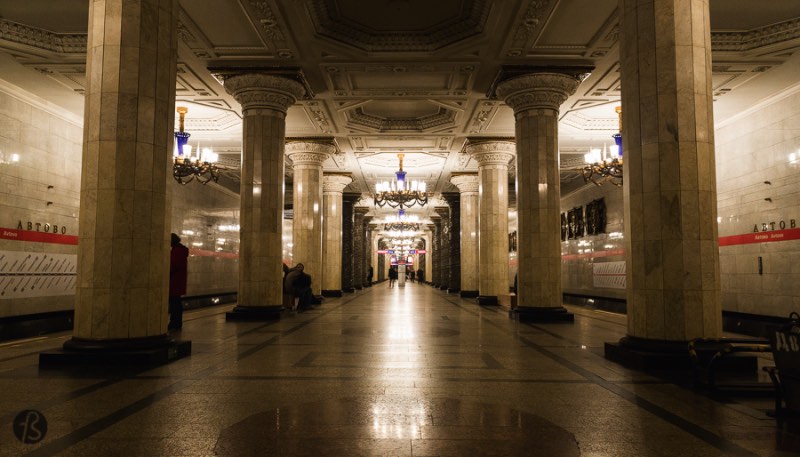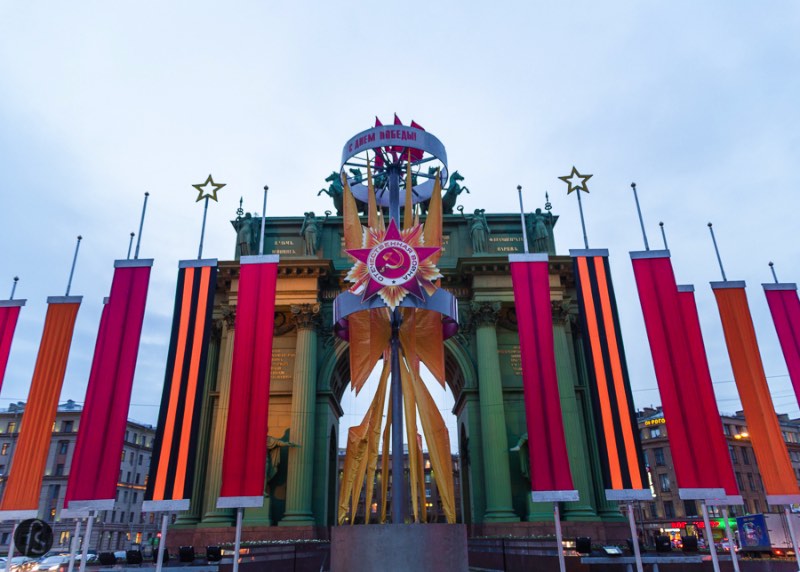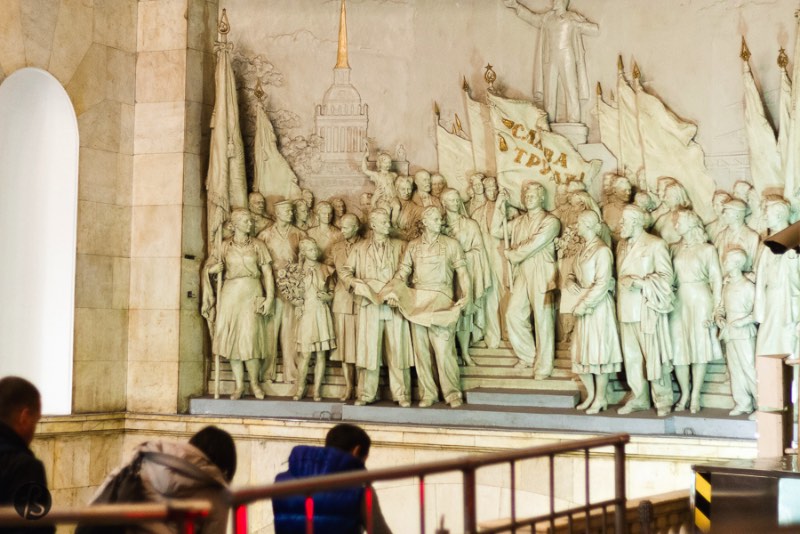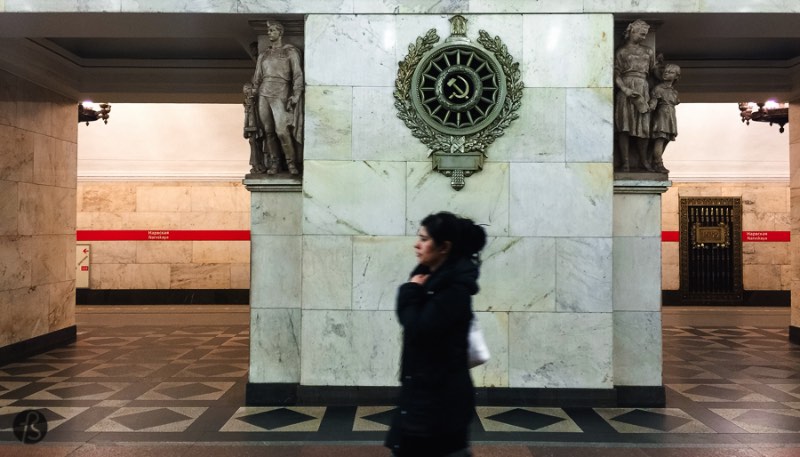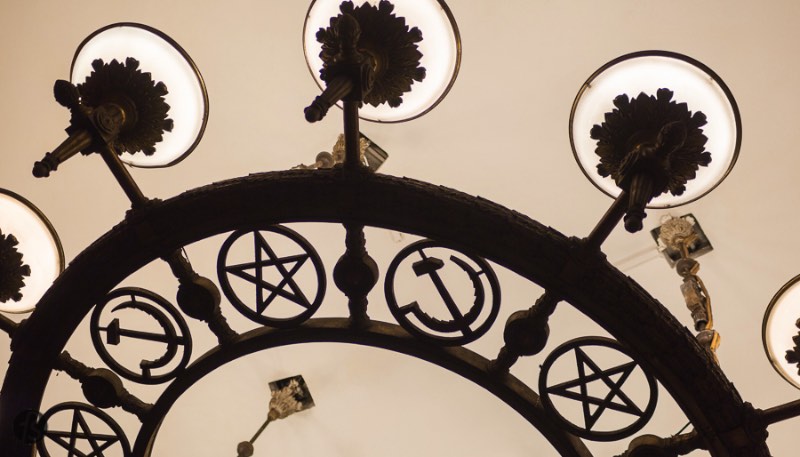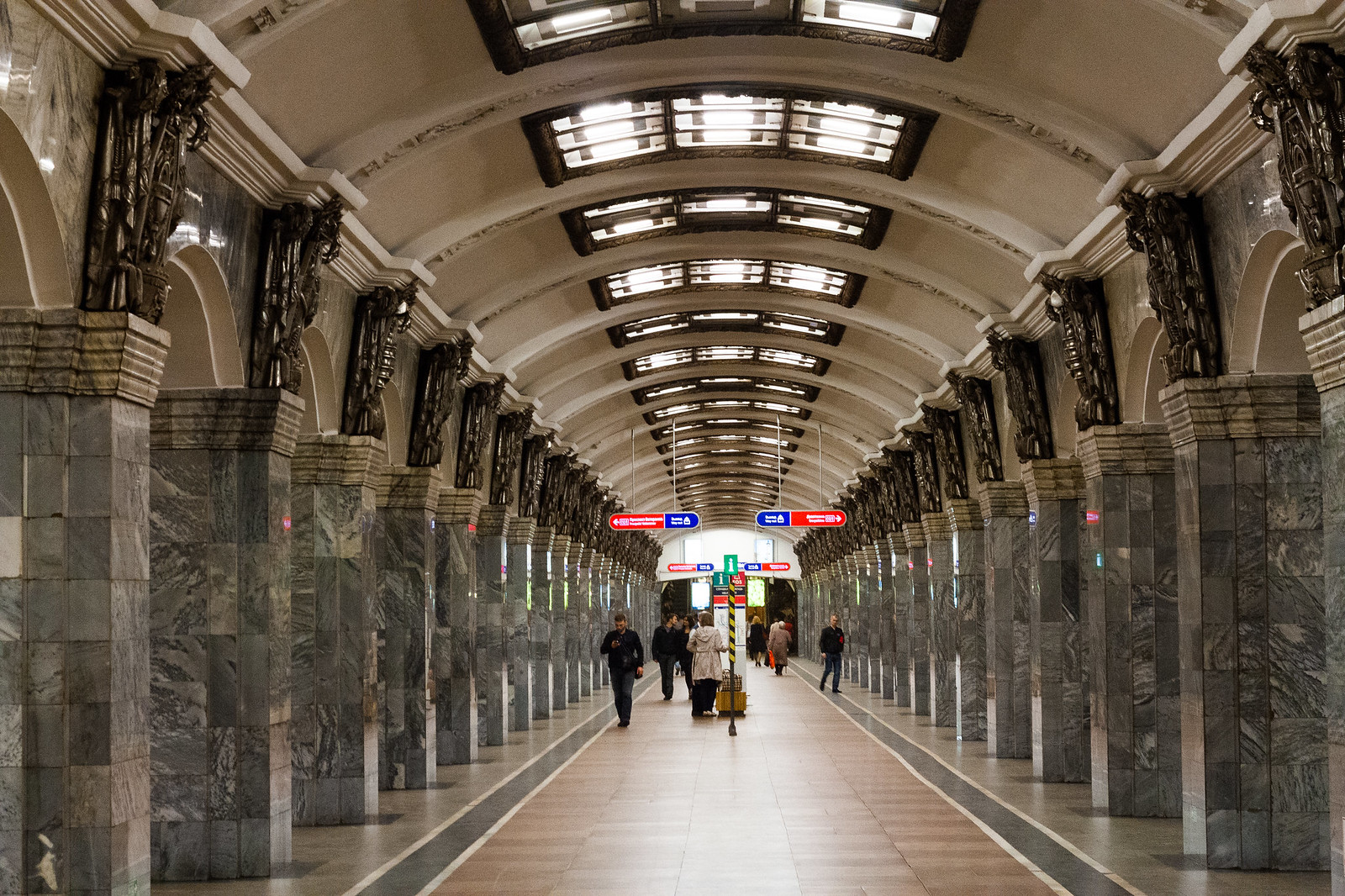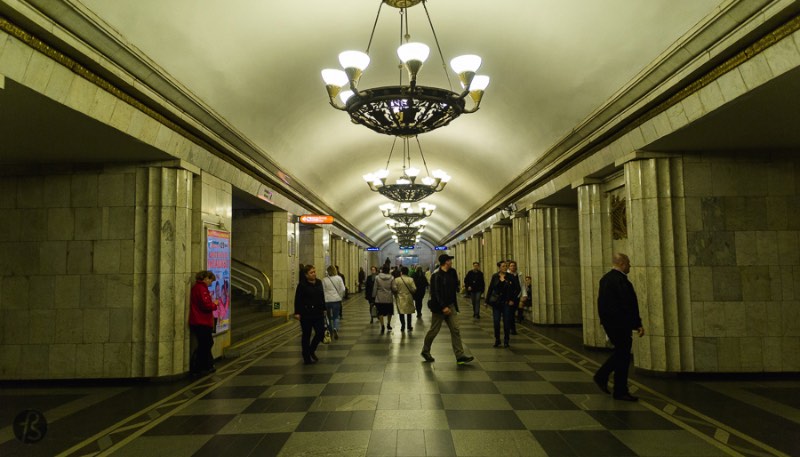The St Petersburg Metro is one of the most beautiful underground railway systems we have ever encountered. First opened in 1955, the metro of Saint Petersburg, Russia is one of the busiest in the world with five subway lines, 67 stations, over 3.000 trains and 2.5 million passengers a day.
We visited the St Petersburg Metro when we visited Russia in May and we took pictures of all of the intricate details.
When you purchase your coin ticket and take the stairs down to the St Petersburg Metro you enter a different world. The subway there is one of the deepest in the world and each metro station is a work of art. Each station has its own unique and special decoration telling a story about Russia’s past.
When you see the pictures here, you may ask yourself why the St Petersburg Metro is such a beautiful place and the answer is simple. The subway in Soviet times was considered to be the Palace of the People and was to be decorated as such. That is why each one of the stations in the St Petersburg Metro is a unique and stunning work of art. They are subterranean palaces for the people; they’re a place to preserve Russian art and history where it can be displayed to the public; that is why the metro stations are so beautiful.
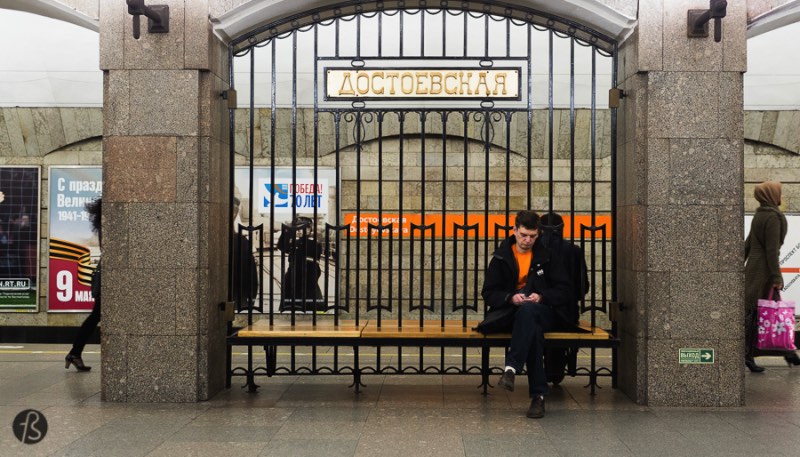
Admiralteyskaya, one of the main stations in Saint Petersburg is located 85 meters below ground! You may be asking yourself why so deep and one of the reasons is the Cold War. Most of the metro station is St Petersburg were built to be doubled as bomb shelters, and many of the old subway stations have big blast doors and air filters that would’ve protected the people from an upcoming attack.
St Petersburg Metro History
In Russian, the St Petersburg Metro is called Петербу́ргский метрополитен and the idea to build an underground railway system in the city arose first in the beginning of the 19th century when a project was submitted to dig a tunnel from the center of the city to Vasilyevsky Island. Alexander I rejected the project and it was only in 1938 that the question of building a metro for St Petersburg resurfaced. Back then the city had been renamed Leningrad and, in 1941, the initial phase of construction began. Too bad everything had to stop due to lack of funding during the Second World War.
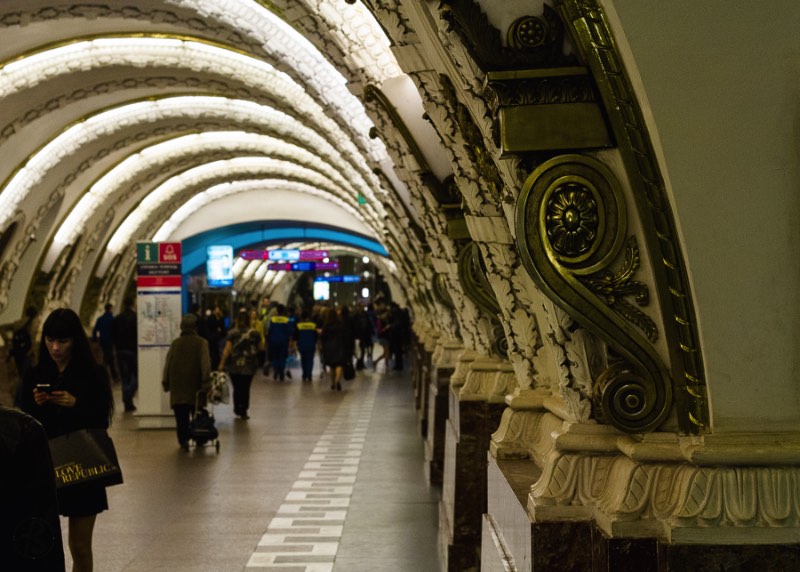
We can split the St Petersburg Metro stations into three different categories: the ones from the glory days of the Soviet Union that are richly decorated; the ones from the seventies that look simpler and show the fall of USSR as an economic power; and the newly built ones that try to get back to the beauty of the past.
All of them are beautiful in their own ways but we fell in love with some more than others. Below you will find the stations we loved the most.
Avtovo Station
The Avtovo station is our favorite one in the St Petersburg. In Russian it is written as А́втово. The station is part of the Kirovsko-Vyborgskaya Line and was designed by Ye.A. Levinson and opened as part of the first Metro line back in 1955.
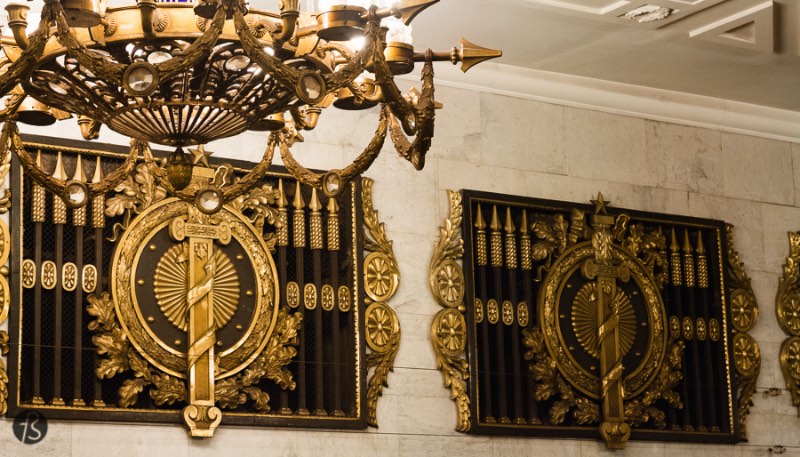
At the end of the platform, you can see a mosaic created by V.A. Voronetskiy and A.K. Sokolov that reminds us of the Leningrad Blockade during the Second World War.
Kirovsky Zavod
Compared to the Avtovo station, the Kirovsky Zavod looks simple but it isn’t. This was the one metro station that looked the most Soviet to us. Filled with iron icons from soviet times, the Ки́ровский заво́д (in Russian) is located 50 meters below ground and can be reached via the Kirovsko-Vyborgskaya Line.
One of our favorite things in this station can be found at the end of the platform. A bust of Lenin is being exhibited there and it makes everything feel even more Soviet.
Narvskaya
The Narvskaya station, На́рвская in Russian, is another of the original metro stations in St Petersburg. First, it was supposed to be named Ploshchad Stachek (Square of the Strikes) but the name was changed to Stalinskaya. After Joseph Stalin’s death in March 1953, the USSR political structure changed and the station was renamed to Narvskaya after the Narva Triumphal Gate, located opposite the entrance to the station.
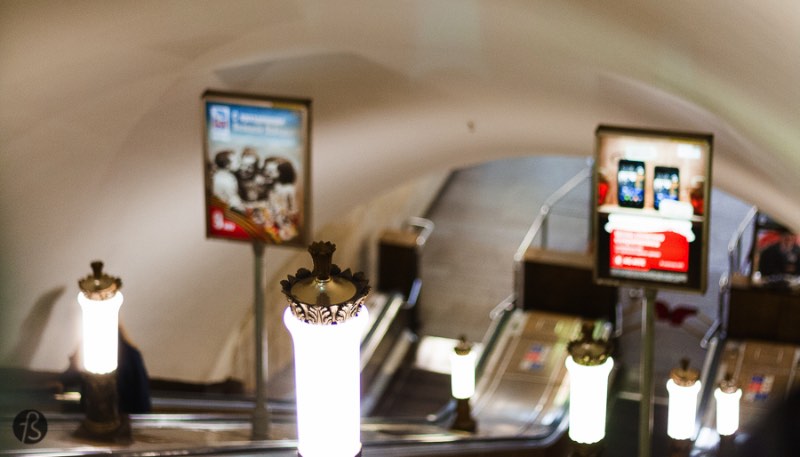
The Narvskaya station is beautifully built in the neoclassical style, filled with white marble and bronze inserts everywhere. To get there, you have to go down three flights of escalators. The escalators run 52 meters deep and are illuminated by highly-artistic fixtures – cylinders topped with a metal crown which is bronze in color. It is beautiful.
Travel by Subway in St Petersburg
Traveling through St Petersburg by metro is the easiest and fastest way to see everything the city has to offer. You can move across the islands of this Russian city in a beautiful place and we can only advise you to do it like we did.
There are five color-coded lines in the St Petersburg Metro and you can see the entire city with them. But get ready to walk inside the metro since the stations can be pretty far from the entrance point. We blame the long walks on the soviet architecture and the steep depths of the metro.
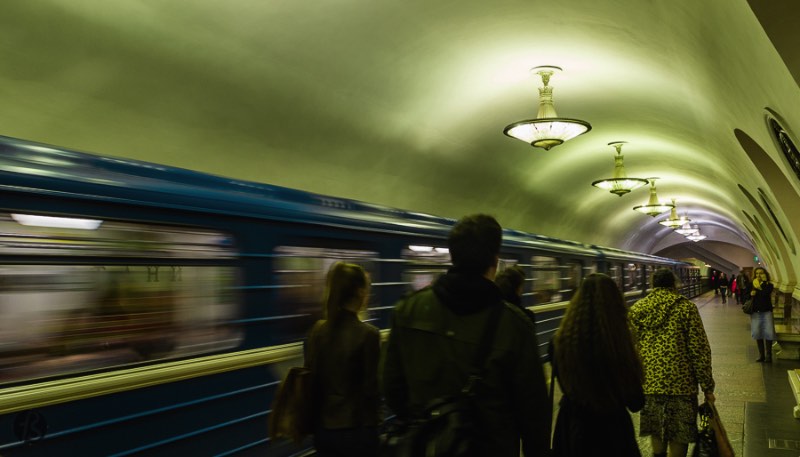
The St Petersburg Metro is open from 05:45 in the morning to 00:20 at night and runs every day. If you want to see the stations like we did, avoid the metro during rush hour (8 to 10 in the morning and 6 to 8 in the evening). During rush hour the St Petersburg Metro is crowded and we don’t want you to feel overwhelmed crowded between Russian-speakers.
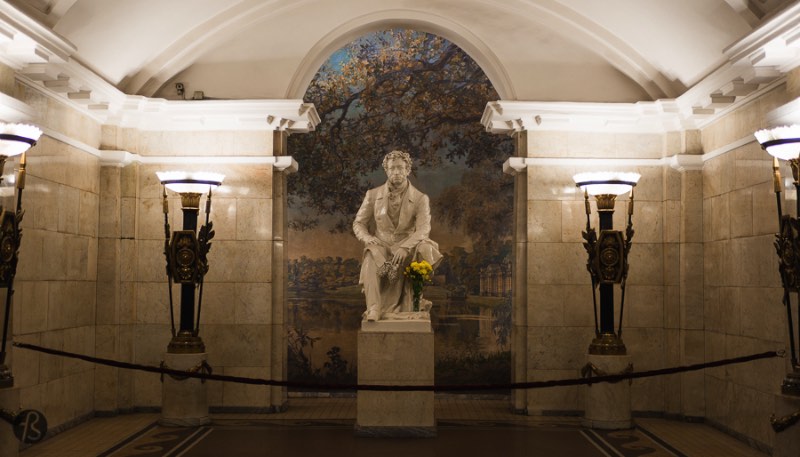
But, if you do get lost and need to go to find the street, follow the blue subway signs which read ‘way out.’ Follow the directions of the signs and you will find your way out of the metro. Sometimes this is all you need to figure out where you are in relation to the rest of the city.
Next time we are in Russia, we will explore more of the St Petersburg metro. There is a lot to be seen and we barely scratched the surface.
If you decide to go to Russia, you should go with Timetravels! They are an amazing travel agency and they can help you out with everything you might need to have a perfect Russian trip. They organize all kinds of tours, from student tours to low budget tours to grown up travels! Get in touch with them and please mention that Fotostrasse recommended them!
If you like what you read here, you should join us on our facebook group, Twitter and, maybe, even our Flipboard Magazine. Or, subscribe to our newsletter!
